If you’re new to the game this is the question you’ll face especially during your training. So in this article, I’ll share a simple 3-step process you can use to solve puzzles.
After that, I’ll share some typical examples where we’ll use the process to solve the puzzles and show a way to improve your speed at solving them. Before we move on, I must confess that everyone has a different process. Also with time and experience, the process evolves.
But regardless of that, it’s important to solve puzzles as it improves your tactics and calculation.
Last Updated: September 28th, 2021
Which puzzles should you solve?
At first, you should start with easy puzzles and move on to more difficult ones. Imagine you’ve decided to run a marathon. Is it possible that from day one you’d be able to run 42 kms all at once?
For most humans, that would be impossible. You’d need to train for smaller distances, become better at it and then gradually increase the difficulty.
If you start with the goal to run 42 kms at once in the first few weeks without proper training, you are going to put yourself under immense pressure and become demotivated when you don’t hit your target.
The same also applies when you train in chess. You first start to solve simple chess positions, before you move on to more complex ones.
So if you’re a beginner and have never solved a puzzle in your life, I recommend you start by solving basic ‘Mate in 1’ puzzles first. Once you master that, then you can start with ‘Mate in 2’ puzzles and so on.
You keep increasing the difficulty as things become easier.
Process To Solve Puzzles
- Look for forcing moves.
- Look at what each piece is doing.
- Look at what would be left at the end.
For most masters, because of continuous training, they are able to spot simple combinations and checkmates rather quickly.
While everyone develops their own individual style for solving puzzles, there are some common elements which they all follow.
I’ll share them below.
1) Always look for forcing moves
These are moves where your opponent is FORCED to react to in a certain way. This limits their choices and gives your calculation a direction to follow.
The forcing moves are:
- Checks – Thanks to the rules of the games, a player has to deal with a king in check, and any other move which doesn’t address this problem is illegal.
- Captures – When you capture material, the opponent needs to recapture it back or else they’ll be behind in material. While capture isn’t as forcing as a check, the opponent’s choice is still restricted.
- Attacking moves – What’s your first instinct when someone attacks your queen? Do you ignore it or you make sure that your queen is safe? Under normal circumstances, any player would move their queen away(unless you’re Mikhail Tal!). So basically when you attack something, your opponent has to respond to your threat. Once again, this puts a limit on their number of options.
Now let’s see practical examples and understand how to put these principles into action.
2) Watch out for which piece is doing what
Often there will be a piece that will be performing an important defensive task. Other times, they might be controlling an important square or attacking something. You don’t need to be very detailed on this, but it’s good to have a general understanding of what pieces are doing.
As you become more experienced, this process happens unconsciously without your active interference.
3) What are you left with at the end?
You need to get a firm answer to this question because this determines whether the sequence you played was good or not. In chess terms, this is also called the evaluation of the position. You need to assess what you’ve got at the end, whether it’s an extra pawn, extra piece, a better square for your pieces etc.
These three things will serve you as a good starting point.
Now let’s get down to business and see how it all works in practice.
Types of Puzzles and How To Solve Them
Let’s go over the different types of puzzles and how to solve them, beginning with Mate in One Puzzles. We’ll keep increasing the difficulty.
How To Solve Mate in One Puzzles
In these puzzles, you’re supposed to deliver a mate in 1 move. This means here, you should always look for the checks in the position, since that’s the only way you could deliver a checkmate.
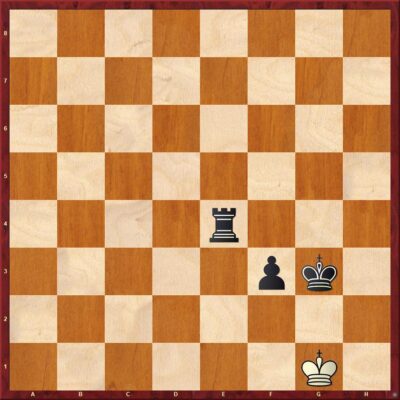
Black to play.
Let’s ask ourselves – “What are the forcing moves they can play?” We can notice they have 2 checks at their disposal –
1…f2+
1…Re1+
Since this is a mate in 1 puzzle, one of them should lead to a checkmate. Let’s just find that out with a simple calculation.
After 1…f2, White can still play 2.Kf1 or Kh1 and it’s not a mate yet.
And after 1…Re1+, can the White king move anywhere? Absolutely not! So after the 2nd move, White is checkmated. Therefore the solution would be 1…Re1#.
This is a simple illustration to show you how a more complicated process works.
How To Solve Mate in Two Puzzles
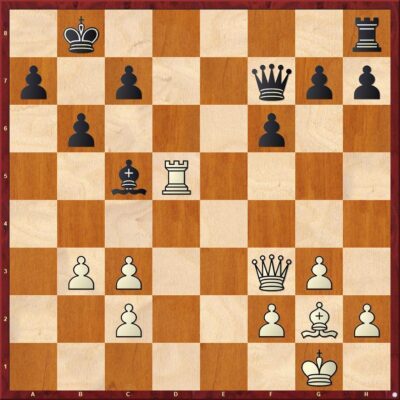
It’s White to play and mate in two in this position. What to play?
Let’s start by calculating the forcing moves in the position. What are the checks White has? We immediately noticed one 1.Rd8+! How can Black respond to it?
They’re forced to play 1…Rxd8. Again, we ask ourselves, what are the forcing moves White has after 1…Rxd8? If you notice carefully, the queen and bishop are eyeing the long h1-a8 diagonal and will soon deliver a checkmate.
So we can find White has 2 checks, and apparently both lead to a checkmate after 2.Qa8# or 2.Qb7#
Another similar example on mate in two moves.
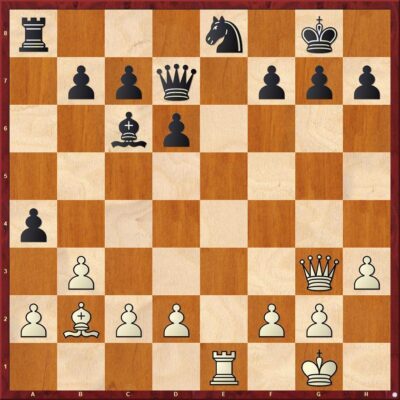
Put the process that you learned to use above, and you should be able to find an answer.
White plays –
1.Rxe8+ and after 1…Rxe8 2.Qxg7#
After 1…Qxe8 also 2.Qxg7#.
White is winning after Rxe8+.
Here, I’d also like to emphasize here on the importance of paying attention to the details in the position. If you notice, White is attacking on the g7-point. They could’ve started with 1.Qxg7 or 1.Bxg7, but in both cases, the knight was defending the g7-pawn.
So after 1.Rxe8, we eliminate the knight on e8 defending the g7-pawn. During your calculation, pay attention to such small details. They help you understand the position better.
General Tactics Puzzles
Black has just played …Nd4. How should White respond?
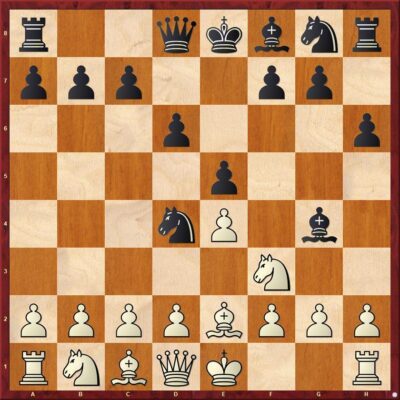
Let’s kick off our calculation by looking for forcing moves. White could give a check with 1.Bb5+. Black would then play 1…Nxb5 capturing White’s bishop. Sounds like a bad deal!
So continue looking for other options.
Do you have any captures? Yes, we can spot 1.Nxd4. What would Black do then? Let’s calculate one by one.
They could play 1…exd4, but then we capture their bishop with 2.Bxg4. Now if we count the pieces, we are a piece up! So this is a bad deal for our opponent, and they shouldn’t take it!
What else could they play? 1…Bxe2 was another option for them.
Now again we have 3 options – 3 forcing moves – 2.Kxe2, 2.Qxe2, 2.Nxe2.
Now, it’s easy to discard 2.Kxe2 because Black then has 2…exd4 and the material is equal. We lost a knight and bishop, and so did our opponent.
If you observe on 2.Qxe2, Black has the same reply – 2…exd4. We could play 3.Qb5+ and try to gain the b7-pawn.
But before we move there, let’s examine another important option we might have – 2.Nxe2. Suddenly, we realize that Black has no …exd4. Our knight is safe, and we have lost only 1 bishop, while our opponent has 2 pieces, the bishop and the knight. We are a piece up!
And so we’ve established that 1.Nxd4 Bxe2 2.Nxe2! leaves us with an extra piece.
A Famous Position
This is a popular position.
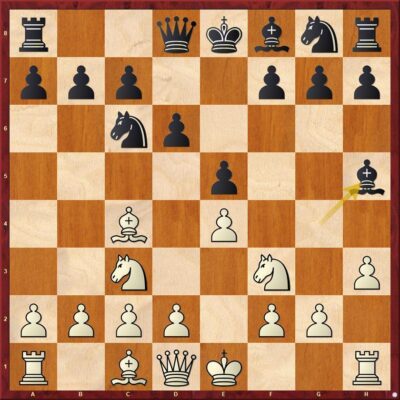
Here White has a strong way to proceed. Can you spot how? Let’s get down to business!
What are White’s forcing moves?
1. Bxf7+ (check)
1. Nxe5 (capture)
1. g4 (attacking move)Very quickly we can find out that 1.Bxf7+ Bxf7 brings nothing. White loses their piece and there doesn’t seem to be a reasonable follow up.So let’s have a look at 1.Nxe5. Black has 3 choices then. Here’s how the process could look like – 1…dxe5 2.Qxh5(capture) and White wins a piece.
Another line could run like 1.Nxe5 Bxd1 2.Bxf7+(check) Ke7 3.Nd5#(check). A beautiful mate!
1.Nxe5 and now let’s consider 1…Nxe5. White plays 2.Qxh5 (If instead 2.Bxf7+, Black defends with 2…Bxf7 after which White has nothing.) 2…Nxc4.
Looks like White has lost a piece, but they have a forcing move left at their disposal 3.Qb5+! Qd7 4.Qxc4 and White regains the piece and has an extra pawn. Now we know that 1.Nxe5 works and leaves us with an extra pawn!
If you calculate for 1.g4, you’ll see that it leaves us with nothing after 1… Bg6.
So what do we play? We go for 1.Nxe5! Because it leaves us with extra material compared to the other two lines.
Pattern Recognition — The Art of Solving Puzzles… Faster!
Have you ever wondered how a Super Grandmaster like Hikaru Nakamura is able to solve positions at such a fast speed? That’s because he has solved many positions over and over that have built up his ‘pattern recognition muscle’. For a lot of master level players and strong amateurs, this thing holds true.
The easiest way to build this muscle is to solve puzzles on one theme!
It’s like to make your legs strong, you focus only on that muscle group and do squats daily.
Similarly, to become good at pins, you solve puzzles whose main theme is a pin.
Enough of talking, let me show you how it actually works.
How Pattern Recognition “Fires Up” Old Memories of Training
Let me share two puzzles to show how effective this tool can be.
Puzzle #1
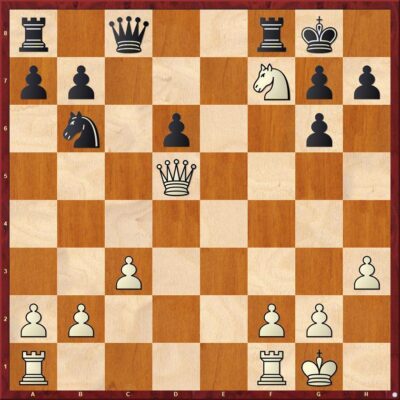
It’s White to play, what would you play? Let’s use the process and examine the forcing moves – 1.Nh6+, 1.Ng5+, 1.Nd8+, 1.Ne5+, 1.Nxd6+.
You’ll notice that after all other moves apart from 1.Nh6+, White is losing their queen with 1…Nxd5. So immediately all those options are discarded.
Let’s examine 1.Nh6+ (double check with queen and knight). Black’s only legal move is to move the King away with 1…Kh8. Then again we have two checks –
Nf7+
2.Qg8+
On 2.Nf7+, Black plays 2…Kg8 while repeating the position. So does White have any other options?
2.Qg8+ looks crazy, but let’s keep going with that fantasy. Black has only one forced move 2…Rxg8+ and then suddenly we spot that the only forcing move leads to a checkmate – 3.Nf7#.
So we instantly play the solution – 1.Nh6+ Kh8 2.Qg8+ Rxg8 3.Nf7#.
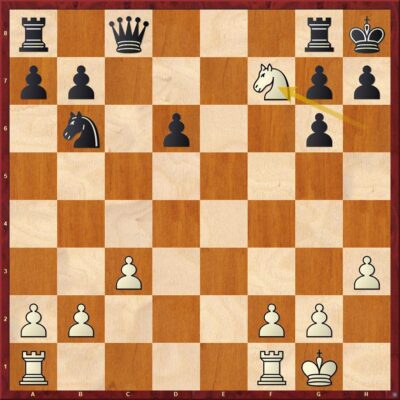
This pattern is also known as the smothered mate.
Puzzle #2
Now that you know the previous puzzle, this one should be easy to solve. How would you continue as White?
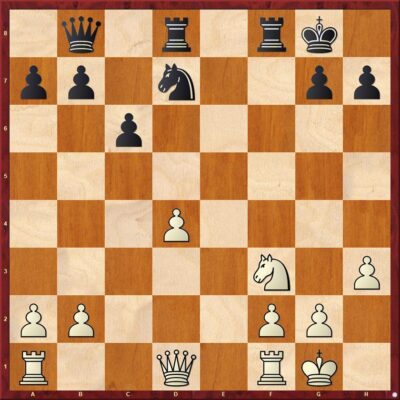
On careful inspection, you’ll see that the first move is 1.Qb3+. Now consider Black’s options 1…Rf7 and 1…Kh8.
After 1…Rf7, White White’s forcing moves are 2.Qxf7, 2.Qxb7.
In both cases, White achieves nothing.
So what do we do? We return to the position and find out if there’s anything else.
Suddenly, we can spot an attacking move with 2.Ng5. Black’s rook is pinned and it soon will be captured.
So – 1.Qb3+ Rf7 2.Ng5 leaves us with an extra exchange as we will capture the f7-rook with our knight.
After 1.Qb3+ Kh8, our forcing moves with a check (2.Qxb7 and 2.Qg8+) bring us nothing, so we play something else. What’s that? We can play 2.Ng5!
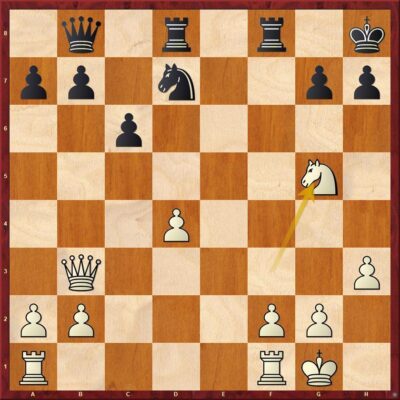
Can you spot the similarities between this position and the previous one? That’s basically how pattern recognition works in chess. You find something you are familiar with and try to execute that on the board.
If you notice carefully, Black has no way to defend against 2.Nf7+ or 2.Ne6, leaving White with an extra exchange. And thanks to the last puzzle, you should be able to figure out how White threatens a smothered mate.
So the solution will be 1.Qb3 Kh8 2.Ng5!
Conclusion
To become better at solving puzzles, there’s only one way and that is by solving them everyday. This is also how you’ll build your muscle for pattern recognition.
The process shared here should give you a good starting point. Go to chess.com or lichess and start to put what you learnt here into practice!
Happy solving!
I hope this guide on how to solve Chess puzzles helped you. You may also be interested in reading about castling in Chess. and the list of ways on how to get better at Chess.


